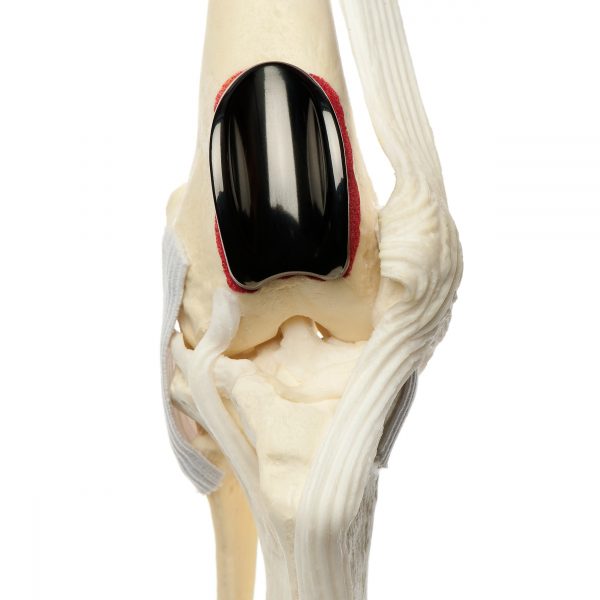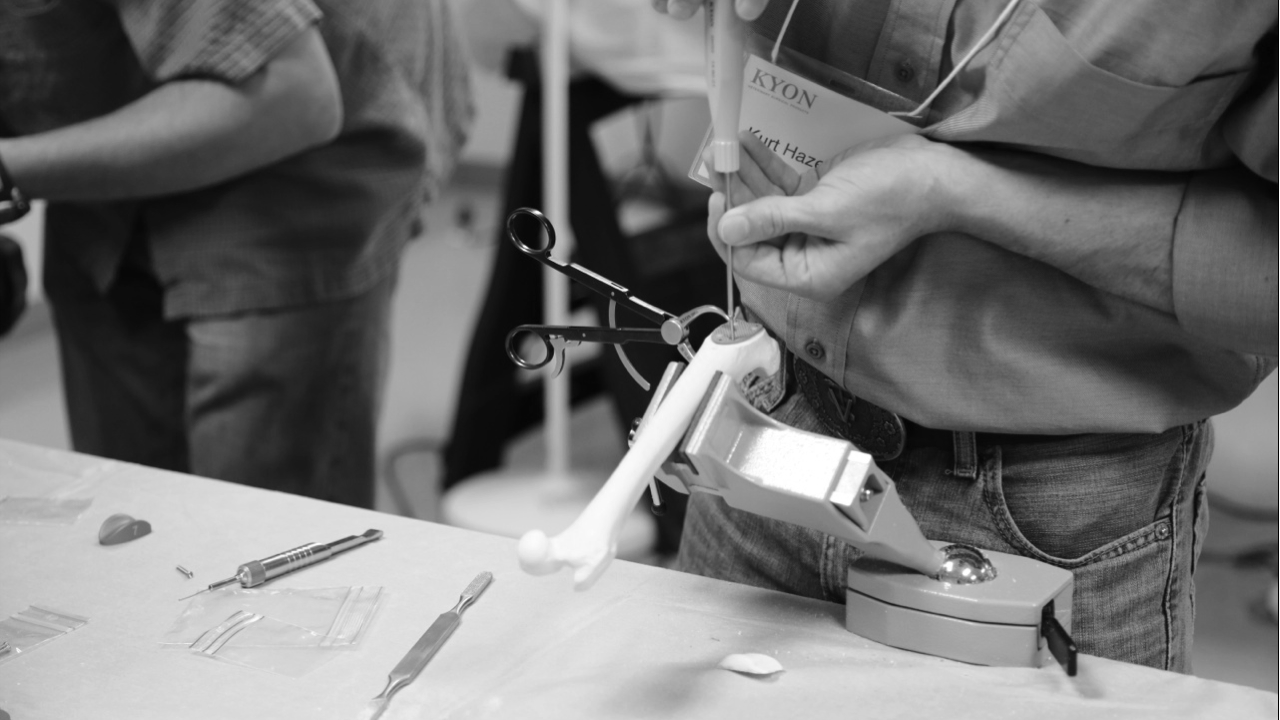
Why PGR?
Patellar Groove Replacement (PGR) provides a novel solution to the challenge of treating severe canine patellofemoral degenerative joint disease.
While conventional treatments, e.g. TTT, remain effective for patients with grade 1 – 2 patella luxation, more complex scenarios, combining multiple deformities and severe trochlear malformation, present a considerable challenge to surgeons and too often result in a less than satisfactory clinical outcome.
The execution of the PGR surgical technique is straightforward. However, successful outcomes require surgeons’ comprehensively evaluating the hind limb and accounting for all relevant factors.
The PGR Workshop is available as a dry lab or wet lab workshop. Both formats include lectures on background, planning, surgical technique, clinical experience, and complications. The wet lab format includes the practical exercise of surgical planning, execution of a PGR on a cadaver specimen, post-op radiography, and case review discussion.
Included in the workshop booking is enrolment in an online introductory course that provides relevant information about the PGR system, indications for PGR, pre- and post-operative care, and the surgical technique.
Top reasons why participants take a PGR workshop:
- Overcome the common obstacle of returning these patients to full activity, severe abnormality of the trochlea.
- Capacity for PGR to address mild-moderate malalignment as well as trochlear malformation, avoiding corrective osteotomies to the femur or tibia.
- Desire to elevate the standard of care in your practice.
- Ability to combine PGR with TTT and corrective osteotomies, as well as TTA or TPLO.
- Expand your surgical skills and knowledge.
Why with KYON?
- As the inventor of PGR, KYON has a deep understanding of the clinical development, experience, pitfalls, and tips for success with the system.
- Strengthen your network with other professionals and instructors.
- Online training resources are available to participants before and after the course.
- Small groups, experienced instructors, and extensive cadaver training in the wet lab workshops.
Participants Profile
KYON PGR Training is appropriate for veterinary surgeons with well-rounded orthopedic experience, knowledge in fracture plating, corrective osteotomies, and TPLO or TTA techniques. Complications are minimal, commonly associated with technical errors, and easily avoided with comprehensive instruction, diligent planning and practice.
Your hospital OR is suitable for advanced orthopedic surgery, including joint replacement.
Some surgeons and clinics will have more preparation to do than others. We are happy to discuss your specific circumstances and chart a path.
Workshops
This practical PGR workshop aims to improve your understanding of all critical aspects of PGR and equip you with the necessary skills to achieve consistently successful clinical outcomes.
- Function of the stifle and rational: Review the anatomy, structure, and function of the stifle as well as the rationale and theory behind PGR.
- Examination of the stifle: Learn to perform a comprehensive physical and orthopedic examination of hind limb alignment.
- Pre-op planning: Learn how to plan a PGR procedure, using physical and digital templating tools.
- Healing process: Review the biological and biomechanical elements of the PGR healing process.
- Surgical technique: Learn how to perform PGR through a comprehensive lecture that includes how to avoid intra-operative complications and technical mistakes.
- Post-op evaluation: Learn the keys to evaluating surgical technique on post-op radiographs and at follow-up consults.
- Advanced techniques: Review advanced techniques for complex cases, new and ongoing research related to PGR.
- Complication management: Review the most common complications and how to manage them effectively.
Workshop Outcome: Completion of this workshop prepares you to perform PGR independently and incorporate the procedure into your clinical services.
Duration: 1 Day
Workshop Type: Dry lab or wet lab as detailed in the workshop description
Requirements: Attendees should be experienced in conventional treatments for patella luxation (e.g. TTT and wedge/block trochleoplasty), knowledgeable in fracture plating, and corrective osteotomies of the hind limb.
